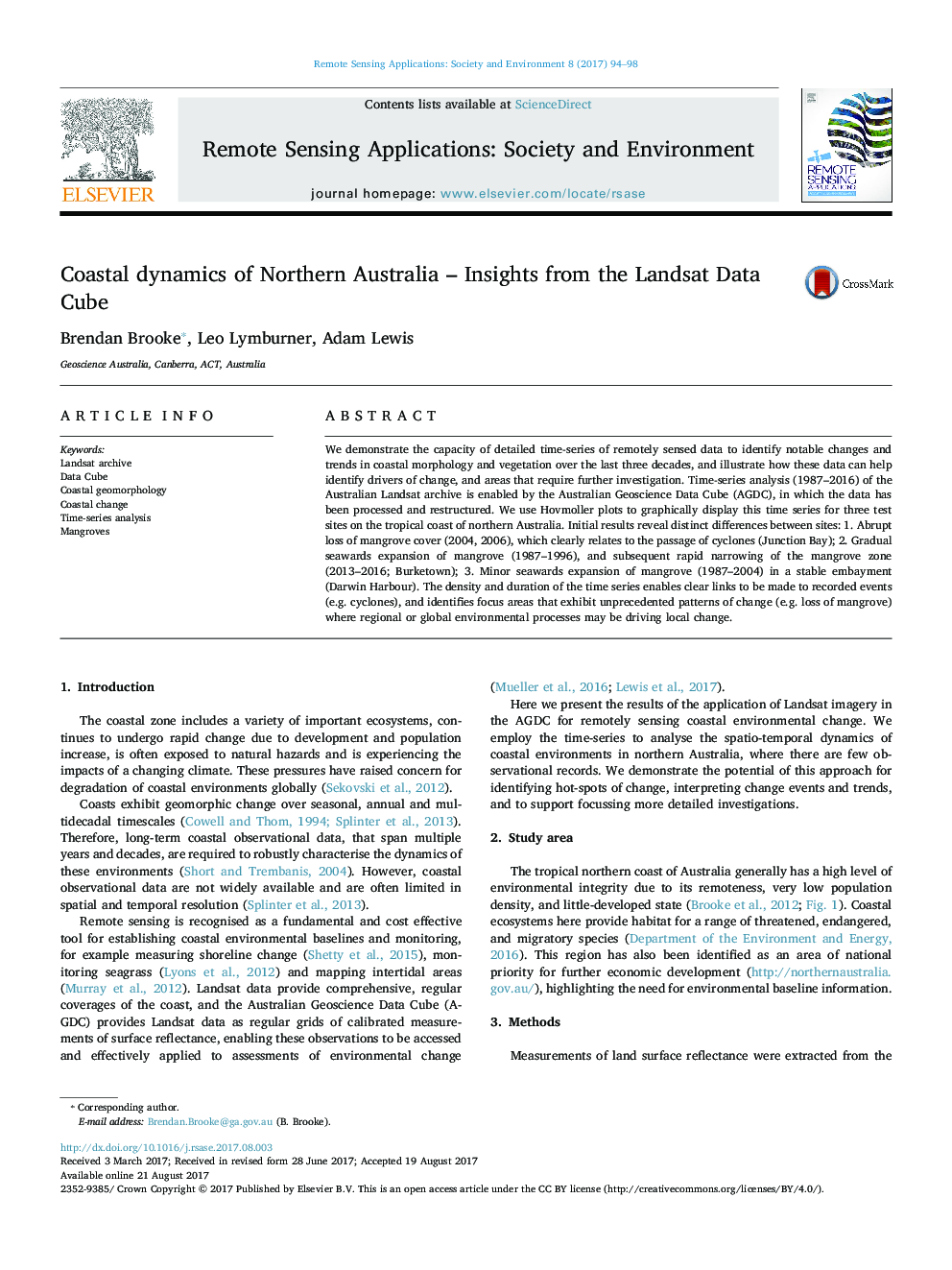| Article ID | Journal | Published Year | Pages | File Type |
|---|---|---|---|---|
| 5754604 | Remote Sensing Applications: Society and Environment | 2017 | 5 Pages |
We demonstrate the capacity of detailed time-series of remotely sensed data to identify notable changes and trends in coastal morphology and vegetation over the last three decades, and illustrate how these data can help identify drivers of change, and areas that require further investigation. Time-series analysis (1987-2016) of the Australian Landsat archive is enabled by the Australian Geoscience Data Cube (AGDC), in which the data has been processed and restructured. We use Hovmoller plots to graphically display this time series for three test sites on the tropical coast of northern Australia. Initial results reveal distinct differences between sites: 1. Abrupt loss of mangrove cover (2004, 2006), which clearly relates to the passage of cyclones (Junction Bay); 2. Gradual seawards expansion of mangrove (1987-1996), and subsequent rapid narrowing of the mangrove zone (2013-2016; Burketown); 3. Minor seawards expansion of mangrove (1987-2004) in a stable embayment (Darwin Harbour). The density and duration of the time series enables clear links to be made to recorded events (e.g. cyclones), and identifies focus areas that exhibit unprecedented patterns of change (e.g. loss of mangrove) where regional or global environmental processes may be driving local change.
